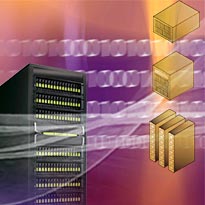Home
From Wikibon
| Line 5: | Line 5: | ||
'''''1. Six Wikibon experts break down EMC's recent analyst event''''' (23 Mins) | '''''1. Six Wikibon experts break down EMC's recent analyst event''''' (23 Mins) | ||
{{Click||image=Icon_listen.gif|link= Media:12-16-08_EMC_Peer_Incite_mashup.mp3 | width=67px|height=16px}} | {{Click||image=Icon_listen.gif|link= Media:12-16-08_EMC_Peer_Incite_mashup.mp3 | width=67px|height=16px}} | ||
| - | *[[EMC | + | *[[EMC strategies for 2009 and beyond|Read the research notes from this meeting]] |
| Line 45: | Line 45: | ||
| - | [[Category:Backup and restore]]<br />[[Category: Blade computing]]<br />[[Category: Business compliance]]<br />[[Category: Clustered storage]]<br />[[Category: DMX]]<br />[[Category: Data classification]]<br />[[Category: Data deduplication]]<br />[[Category: Disaster recovery]]<br />[[Category: ECM]]<br />[[Category: EMC]]<br />[[Category: Email archiving]]<br />[[Category: Email storage]]<br />[[Category: Green storage]]<br />[[Category: Hitachi]]<br />[[Category: IBM]]<br />[[Category: Managing storage]]<br />[[Category: Mobile Enterprise Wikitips]]<br />[[Category: NAND]]<br />[[Category: SSD]]<br />[[Category: STEC inc]]<br />[[Category: Storage and business compliance]]<br />[[Category: Storage asset management]]<br />[[Category: Storage consolidation]]<br />[[Category: Storage design]]<br />[[Category: Storage disaster recovery]]<br />[[Category: Storage services]]<br />[[Category: Storage vendor management]]<br />[[Category: Storage virtualization]]<br />[[Category: WEB2.0]]<br />[[Category: Wikitips]]<br /> | + | |
| + | [[Category:Backup and restore]]<br />[[Category: Blade computing]]<br />[[Category: Business compliance]]<br />[[Category: Clustered storage]]<br />[[Category: DMX]]<br />[[Category: Data classification]]<br />[[Category: Data deduplication]]<br />[[Category: Disaster recovery]]<br />[[Category: ECM]]<br />[[Category: EMC]]<br />[[Category: Email archiving]]<br />[[Category: Email storage]]<br />[[Category: Enterprise mobile wikitips]]<br />[[Category: Green storage]]<br />[[Category: Hitachi]]<br />[[Category: IBM]]<br />[[Category: Managing storage]]<br />[[Category: Mobile Enterprise Wikitips]]<br />[[Category: NAND]]<br />[[Category: SSD]]<br />[[Category: STEC inc]]<br />[[Category: Storage and business compliance]]<br />[[Category: Storage asset management]]<br />[[Category: Storage consolidation]]<br />[[Category: Storage design]]<br />[[Category: Storage disaster recovery]]<br />[[Category: Storage services]]<br />[[Category: Storage vendor management]]<br />[[Category: Storage virtualization]]<br />[[Category: WEB2.0]]<br />[[Category: Wikitips]]<br /> | ||
Revision as of 15:15, 30 December 2008
Latest Peer Incites:
1. Six Wikibon experts break down EMC's recent analyst event (23 Mins)
2. Grant, a Sr. Storage Admin at a large bank discusses how heterogeneous storage virtualization can help reduce the budget for 2009. (20 Mins)
WikitipMake blade servers as homogeneous as possibleBlade computing works best when organizations apply a ‘one-size-fits-all’ strategy, meaning all the blades in the chassis are as similar as possible and ideally, identical. This means same cpu, same speed, same memory, same everything, including the same vendor. By standardizing on blade servers, operating procedures can assume that every component in the chassis is identical and IT operations doesn’t have to worry about the sensitivity of a particular server component to an application’s unique characteristics. This makes blades more swappable, easier to manage, simpler to back up and cheaper to acquire and inventory. Greater diversity within the chassis defeats many of the benefits of blade computing. If for whatever reason, you don’t want to enforce this degree of commonality, it is advisable that customers take an N and N-1 approach to blade server technology, meaning standardize on a couple of blade server types, one current technology and one current minus one generation, replacing existing server technologies every few years to keep the infrastructure simple. The business benefits of commonality, as seen in the case examples will outweigh any incremental hardware costs borne by this approach. |
Featured Case StudyVirtualization Energizes Cal State UniversityJohn Charles is the CIO of California State University, East Bay (CSUEB) and Rich Avila is Director, Server & Network Operations. In late 2007 they were both looking down the barrel of a gun. The total amount of power being used in the data center was 67KVA. The maximum power from the current plant was 75kVA. PG&E had informed them that no more power could be delivered. They would be out of power in less than six months. A new data center was planned, but would not be available for two years. |
|
Featured How-To Note |
Storage Virtualization Design and DeploymentA main impediment to storage virtualization is the lack of multiple storage vendor (heterogeneous) support within available virtualization technologies. This inhibits deployment across a data center. The only practical approach is either to implement a single vendor solution across the whole of the data center (practical only for small and some medium size data centers) or to implement virtualization in one or more of the largest storage pools within a data center. | |||



